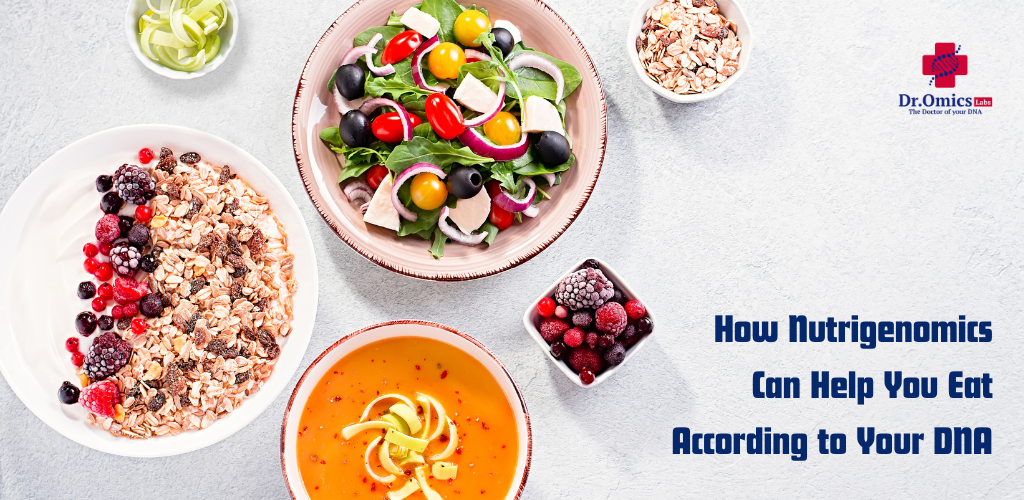Understanding Nutrigenomics: The Science of DNA-Based Nutrition
Nutrigenomics is the fascinating intersection of nutrition and genetics that studies how our genes influence our response to different foods and nutrients. Unlike traditional one-size-fits-all dietary approaches, nutrigenomics recognizes that each person’s genetic makeup creates a unique nutritional profile.
This emerging field examines how genetic variations affect nutrient metabolism, food sensitivities, and overall dietary needs. By analyzing specific genetic markers, scientists can now predict how individuals will respond to different macronutrients, vitamins, minerals, and even specific foods.
Key Insight: Your genes don’t just determine your eye color or height, they also influence how your body processes caffeine, metabolizes fats, responds to carbohydrates, and even your likelihood of developing certain food intolerances.
How the Nutrigenomics Diet Works
The nutrigenomics diet operates on the principle that genetic variations create different nutritional needs among individuals. Here’s how the process typically works:
- Genetic Testing: A simple saliva or cheek swab sample is analyzed to identify relevant genetic variations
- Data Analysis: Advanced algorithms examine hundreds of genetic markers related to nutrition and metabolism
- Personalized Recommendations: Based on genetic results, specific dietary guidelines are created
- Ongoing Optimization: Recommendations are refined based on individual responses and health outcomes
Understanding Metabolism Genetics
Your metabolic rate, weight management tendencies, and energy utilization patterns are significantly influenced by genetic factors. Key areas where genetics impact metabolism include:
- Basal Metabolic Rate (BMR): Genetic variants in genes like UCP1 and ADRB2 affect how efficiently your body burns calories at rest
- Fat Storage Patterns: The FTO gene, often called the “obesity gene,” influences appetite regulation and fat accumulation
- Carbohydrate Sensitivity: Variations in genes like TCF7L2 affect blood sugar response and insulin sensitivity
- Exercise Response: Genetic factors determine whether you respond better to endurance training or high-intensity workouts for weight management
Genetic Food Sensitivities and Intolerances
Many food sensitivities and intolerances have genetic components that can be identified through DNA analysis:
-
Lactose Intolerance: The LCT gene determines lactase persistence your ability to digest dairy products throughout adulthood. Genetic testing can predict lactose intolerance risk with high accuracy.
-
Gluten Sensitivity: While celiac disease has clear genetic markers (HLA-DQ2 and HLA-DQ8), non-celiac gluten sensitivity may also have genetic components that influence inflammatory responses to gluten.
-
Histamine Intolerance: Variants in genes like DAO and HNMT affect histamine metabolism, potentially leading to intolerance of histamine-rich foods like aged cheeses, fermented foods, and certain wines.
-
Caffeine Sensitivity: The CYP1A2 gene determines how quickly you metabolize caffeine. Slow metabolizers may experience jitters, sleep disruption, and increased cardiovascular risk from moderate caffeine intake.
Important Note: Genetic predisposition doesn’t guarantee you’ll develop a food sensitivity, but it can help you make informed dietary choices and identify potential trigger foods early.
References:
- Ferguson, L. R., et al. (2016). Guide and Position of the International Society of Nutrigenetics/Nutrigenomics on Personalized Nutrition.
– Supports the foundational principles of nutrigenomics.
- Ordovás, J. M., et al. (2018). Personalized nutrition and health. BMJ.
– Discusses how genetic variations influence dietary responses.
- Loos, R. J. (2012). Genetic determinants of common obesity and their value in prediction.
– Covers the FTO gene and its role in fat storage.
- Qi, L., & Cho, Y. A. (2008). Gene-environment interaction and obesity.
– Explains TCF7L2 gene and carbohydrate sensitivity.
- Ingram, C. J., et al. (2009). Lactose digestion and the evolutionary genetics of lactase persistence.
– Explains LCT gene and lactose intolerance.
- Sapone, A., et al. (2012). Spectrum of gluten-related disorders.
– Covers HLA-DQ2/DQ8 genes for celiac disease and gluten sensitivity.
- Maintz, L., & Novak, N. (2007). Histamine and histamine intolerance.
– Discusses DAO and HNMT genes in histamine intolerance.
- Cornelis, M. C., et al. (2011). Genome-wide meta-analysis identifies regions… for caffeine consumption.
- – Links CYP1A2 gene to caffeine sensitivity.




